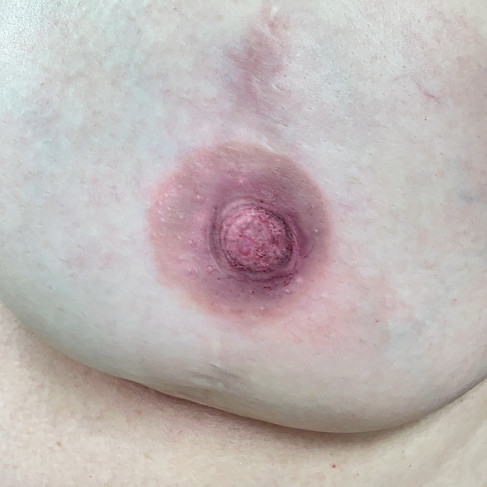3D Unilateral Areola Mastectomy Tattoos
- Heather Jacques
- Oct 15
- 1 min read
The
Art and Challenge of a 3D Unilateral Areola Mastectomy Tattoo
Recreating the natural appearance of a single areola after surgery is one of the most technically demanding forms of paramedical tattooing. A unilateral 3D areola mastectomy tattoo requires more than just artistic ability—it demands a deep understanding of color theory, skin tone variation, and the way pigment heals within living tissue.
Precision in Color Matching a unilateral areola tattoo
When only one breast has an existing areola, the artist must precisely replicate its tone, shape, and texture to create symmetry. This process isn’t about guessing the surface color—it’s about interpreting the undertones that lie beneath.Each pigment is mixed with a strategic balance of warm and cool hues to neutralize residual redness or surgical scar tissue. The artist must also predict how the color will fade and soften by 40–60% as the skin heals.
Two Sessions, Eight Weeks Apart
3D areola restoration is typically completed in two sessions spaced eight weeks apart.The first appointment establishes the base tones and illusion of depth; the second fine-tunes detail, highlights, and subtle temperature shifts to ensure a perfect match once both sides have fully healed.
This careful timing allows the artist to assess healed pigment behavior and make adjustments that bring the color and realism into harmony.
A Balance of Art and Anatomy
True mastery of areola restoration comes from understanding not just how pigment sits in the skin, but how it interacts with scar texture, melanin production, and individual healing patterns.The goal isn’t perfection—it’s restoration: creating a natural, balanced, and believable result that feels authentic to the client’s body.
_edited.jpg)














